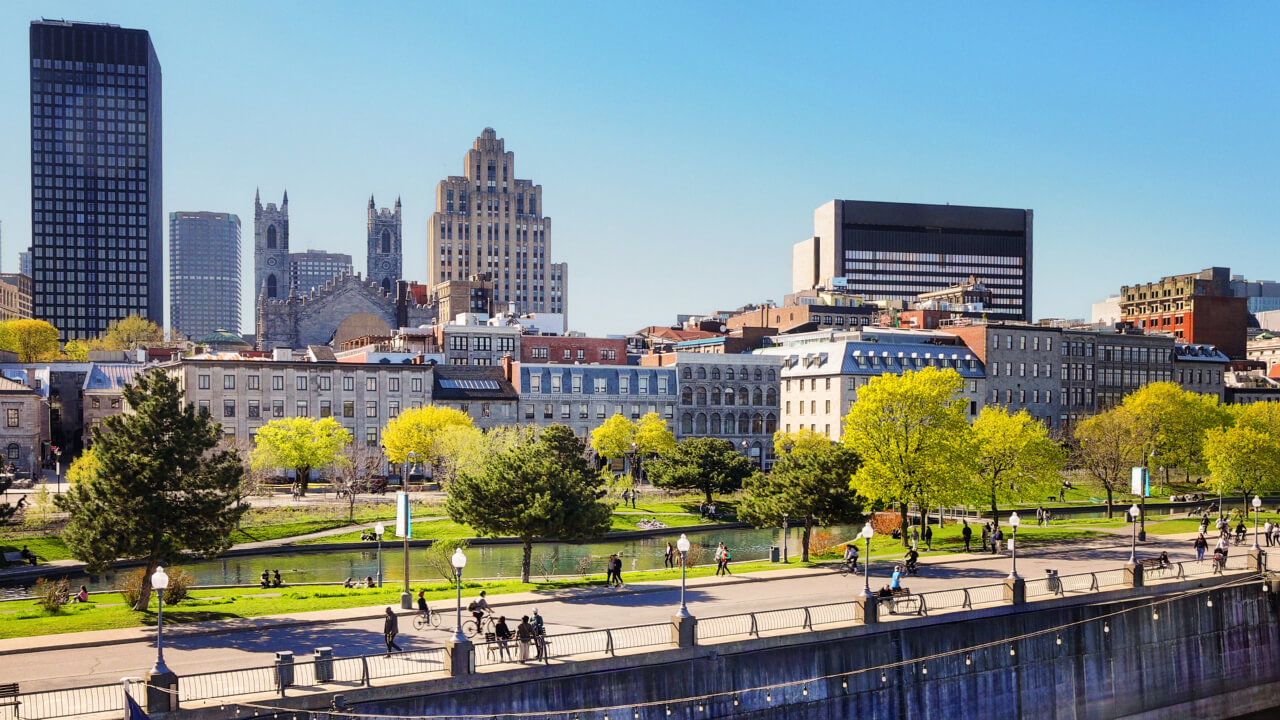Committed to playing a catalysing role in the transformation of its industry and the transition to a low-carbon economy; Ivanhoé Cambridge has pledged in 2022 to adopt the recommendations of the Task Force on Climate-related Financial Disclosures (TCFD). This framework aims to improve companies’ transparency in their management of climate-related risks and opportunities. A year later, Ivanhoé Cambridge publishes a special report containing information in line with the TCFD’s recommendations. This report, available on our website, is a genuine exercise in transparency against a backdrop of tightening global regulations and heightened expectations from our stakeholders. It documents the internal measures Ivanhoé Cambridge puts in place in terms of governance, strategy, risk management, and indicators and targets related to climate change.
A structural challenge for the planet and for real estate
The TCFD was set up by the G20 Financial Stability Board at the UN Climate Change Conference (COP 21) in late 2015 with the aim of improving and increasing climate-related financial reporting by companies. This body has developed a framework on the type of information companies should disclose to investors and to the public to appropriately assess climate risks.
Climate change is having, and will increasingly have, significant impacts on the real estate sector, both in physical terms and as a result of the transition to a low-carbon economy. These impacts represent both risks and opportunities for our industry, our global real estate investment portfolio and, of course, our future business. For several years now, Ivanhoé Cambridge has been identifying, assessing and managing these risks and opportunities by incorporating climate issues into its strategic planning, risk-management and decision-making processes. Implementing the TCFD’s recommendations enables Ivanhoé Cambridge to better structure the way the group reports on its carbon strategy. This commitment to the TCFD is part of Ivanhoé Cambridge’s ambition to achieve carbon neutrality by 2040 for its international portfolio and increase the portfolio’s resilience to risks related to climate disruption. The company has been tracking its carbon emissions performance and exposure to physical climate-related risks for its global direct portfolio1 since 2017.
An active decarbonization strategy
In 2021, Ivanhoé Cambridge formalized an ambitious strategy to achieve carbon neutrality by 2040. Accordingly, the company has set itself the target of reducing the operational carbon intensity of its direct portfolio by 35% by 2025 (compared with 2017). To this end, the group is actively planning and implementing carbon-reduction projects across its global portfolio. By late 2022, the operational carbon intensity of its direct portfolio was reduced by around 30% compared with 2017. In addition, 57% of its assets now hold a green building certification.
Ivanhoé Cambridge’s strategy includes investing in the decarbonization of its existing buildings, and with good reason: 80% of the existing buildings in urban centres today need to be upgraded to be in line with the 1.5°C trajectory called for by the Paris Agreement, a legally binding international treaty on climate change. To meet this challenge, Ivanhoé Cambridge is establishing a “brown-to-green” investment strategy that targets existing assets with the aim of renovating them and significantly reducing their carbon intensity. This measure represents an investment opportunity that extends the useful life of buildings, bringing them in line with the future expectations of investors, tenants and regulatory authorities.
In the same vein, Ivanhoé Cambridge has developed an internal indicator called Green IRR (or Green Internal Rate of Return) with the aim of better anticipating carbon-related risks and opportunities. Currently, asset valuations rarely reflect carbon performance in traditional property valuation models—only 30% of carbon emissions are covered by a pricing system worldwide—which can lead to a risk of asset mispricing. By taking into account the value of carbon, this Green IRR metric offers a more comprehensive assessment of the financial benefits associated with projects to reduce property carbon emissions and, ultimately, enables us to identify assets that are financially sensitive to carbon risks.
A proactive sustainable financing policy
Ivanhoé Cambridge’s commitment to decarbonization and the fight against climate change is also reflected in the financing of its operations. Over the past five years, the company has issued more than C$14 billion in sustainable financing through various instruments (green loans, green bonds, etc.), including C$10 billion in corporate financing linked to its ESG and carbon performance. In the spring of 2023, Ivanhoé Cambridge once again broke new ground by issuing its first sustainable bond for an amount of C$300 million, becoming the first real estate investor to issue a senior unsecured sustainability bond2 in Canada.
All these initiatives demonstrate the Group’s willingness and determination to mitigate climate risks and take advantage of climate-related opportunities. With the firm belief that these steps will help create and protect the long-term value of its real estate portfolio, Ivanhoé Cambridge intends, through these multiple commitments, to fulfil its ambition of building a resilient future.
1 Direct portfolio refers to Ivanhoé Cambridge’s stabilized properties held exclusively or in partnership, with the exception of properties held by funds or publicly traded companies.
2 The purpose of a green bond is to finance green buildings. The purpose of a sustainability bond is to finance green buildings and affordable housing projects.

